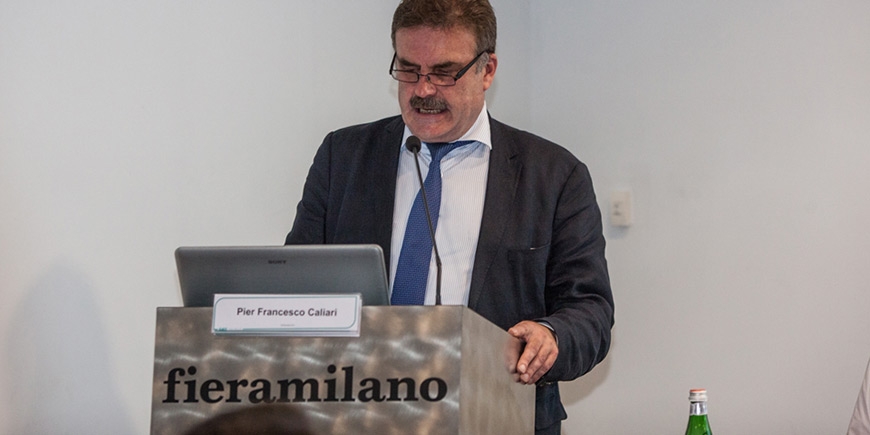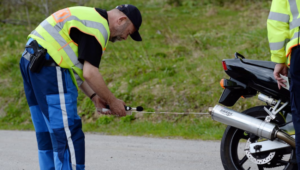
After a long legislative process, almost completed, the European Union is setting itself to implement the new regulatory framework for the type approval of motorcycles. The scenario awaiting the sector for the next decade has been discussed in Milan on the 6th of November on the occasion of the 71st International Motorcycle Exhibition, bringing together policy makers and industry.
After a long legislative process, almost completed, the European Union is setting itself to implement the new regulatory framework for the type approval of motorcycles. The scenario awaiting the sector for the next decade has been discussed in Milan on the 6th of November on the occasion of the 71st International Motorcycle Exhibition, bringing together policy makers and industry.
As the European Union is getting ready for the application of a long series of new provisions related to the type approval of motorcycles, mopeds, tricycles and quadricycles (L-category vehicles), the industry has convened an international conference to discuss about its far-reaching consequences and address open points.
The conference was attended by Wim van de Camp, EPP, MEP from the Netherlands, rapporteur for the regulation. The European Commission was represented by Antti Peltomäki, Deputy Director-General for Enterprise and Industry. The Italian Ministry of Transport, with Antonio Erario, and numerous representatives of the Italian and European industry also participated in the debate.
The aim of the discussions was to bring the adoption of the new legislation into the context of the challenges posed by a lingering economic crisis, urban mobility, and the development of electric and hydrogen powered engines.

The speakers’ panel. From the right: Paolo Magri (Brembo), Antonio Erario (Ministry of Transport), Claudio Domenicali (Ducati), Leo Mercanti (Piaggio Group), Wim Van De Camp (MEP, rapporteur of the type approval regulation), Antti Peltomäki ( European Commission industry of the European Commission), Jacques Compagne (ACEM Secretary General), Antonio Perlot (moderator, ACEM). Standing, Francesco Caliari (Confindustria Ancma)
Wim van de Camp, a strong advocate of a rationalised calendar for the different provisions, opened the conference explaining that the main objective of the regulation approved by the European Parliament and the European Council is to improve functional safety and gradually reduce pollutant emissions from L category vehicles through a series of steps that should come to completion in 2020. He stressed the importance of ensuring sufficient lead-time for the industry to comply, and recommended the EC to have a reasonable and sensible approach to the final definition of Euro5, involving the European Parliament and taking into account the difficult market circumstances.
 Antti Peltomäki described the new measures that will apply from July 2014, with the EURO 3 step leading to cleaner engines for mopeds and light quadricycles, and automatic headlamps for all vehicles. 2016 will see the coming into force of EURO 4 requirements for motorcycles, tricycles and heavy quadricycles, and advanced braking systems for motorcycles (compulsory use of ABS for motorcycles over 125 cc). The new regulations also provide for improved market surveillance provisions, with which the European Commission and the EU Member States intend to ensure closer compliance with the rules, especially regarding the conformity of low quality- low cost imported products. Additional requirements coming into force in 2016 include the mandatory installation of an OBD (on-board diagnostics) system, stricter provisions on evaporative emissions and durability, as well as the obligation to make repair and maintenance information available to all market operators. In 2017, all L-category vehicles will have to be EURO 4 compliant*. Finally, by 2020, all L-category vehicles are expected to comply with the new EURO 5 limits, which still have to be confirmed based on a robust environmental effect analysis to be conducted by the EC. This EC final assessment in terms of cost and benefits will be completed by 2016.
Antti Peltomäki described the new measures that will apply from July 2014, with the EURO 3 step leading to cleaner engines for mopeds and light quadricycles, and automatic headlamps for all vehicles. 2016 will see the coming into force of EURO 4 requirements for motorcycles, tricycles and heavy quadricycles, and advanced braking systems for motorcycles (compulsory use of ABS for motorcycles over 125 cc). The new regulations also provide for improved market surveillance provisions, with which the European Commission and the EU Member States intend to ensure closer compliance with the rules, especially regarding the conformity of low quality- low cost imported products. Additional requirements coming into force in 2016 include the mandatory installation of an OBD (on-board diagnostics) system, stricter provisions on evaporative emissions and durability, as well as the obligation to make repair and maintenance information available to all market operators. In 2017, all L-category vehicles will have to be EURO 4 compliant*. Finally, by 2020, all L-category vehicles are expected to comply with the new EURO 5 limits, which still have to be confirmed based on a robust environmental effect analysis to be conducted by the EC. This EC final assessment in terms of cost and benefits will be completed by 2016.
Jacques Compagne, ACEM Secretary General, stressed the importance of the cost-benefit study on EURO 5. The wide diversity of vehicles under consideration (mopeds, motorcycles, tricycles and quadricycles), require an in-depth investigation taking into account technical, economic and financial parameters. Next to appropriate funding for the study, ACEM argues that over-stringent emission limits in the current market reality – run the risk of further slowing down replacement rate, putting at risk the industry. Additional costs would be spread over a limited number of vehicles – with the risk of further depressing the market, and also not leading to the desired environmental benefits.
The view of the industry was shared by Antonio Erario, who referred as an example to light quadricycles, a relatively small segment that could meet the EURO 5 limits currently proposed by the Commission only through staggering investments in engine innovation, making the final product too expensive for the market. A similar situation could well apply to mopeds and other vehicle categories – hence the Council’s clear request for an in-depth cost-benefit study to be performed.
Manufacturers underscored the importance of market surveillance measures, in order to prevent unfair competition from products manufactured abroad and not meeting quality and safety standards, which is damaging EU manufacturers’ competitiveness and the end consumer.
They also asked EU Institutions to take action to remove trade barriers, such as import duties and non-tariff barriers creating obstacles to European products abroad. These include diverging National vehicle standards, as well as road regulations that exclude high-end products.
Claudio Domenicali, CEO of Ducati, stressed the urgent need for worldwide harmonization of type-approval rules, considered as a critical step to bring down production costs because today, manufacturers are forced to produce specific vehicles meeting requirements that differ from country to country. Innovation is a key element distinguishing established motorcycle brands such as Ducati.
Leo Mercanti, Piaggio Group, underlined the importance of brand value and shared the importance of innovation, for motorcycles and other L category vehicles – in particular referring also to the trend of electrification and urban mobility, He underlined however the importance of balanced legislation, taking into account the specificity of each vehicle segment, and supported the need for fair competition and a level playing field, in particular in the moped and scooter sector, where counterfeiting of EU products is also a problem.
Paolo Magri, Brembo, provided the perspective of component manufacturers, highlighting the challenges EU companies face from outside-EU competition, as well as the difficulty for SMEs in dealing with the administrative side of EU support for innovation. Antti Peltomäki, in replying to the industry concerns, underlined the actions undertaken by the EC within the CARS2020 process. Through impact assessments, the EC seeks to achieve balanced regulations, and to ensure the competitiveness of the industry. In the context of Free Trade Agreements, the EC wishes to take a leading role in the development of opportunities on extra-EU markets. It also provides financing for innovation, with a special regard to SMEs.
In his final notes, Jacques Compagne, addressing the EU policy makers, concluded: “Regulation should be an enabler and enhance the competitiveness of the industry – type-approval requirements must always be backed up by an impact assessment including both technical and economic analyses. Compared to the rest of the world, Europe is a small market, but there is enormous potential outside of our continent. We expect support for exporting our products outside of Europe, and not being obliged to move production lines outside the EU in order to access these market opportunities.”
– For all details concerning the timetable for the application of this Regulation in respect of type-approval refer to the full text of Regulation 168/2013 Annex IV
(*) Existing types of categories L1, L2,and L6 will have to meet EURO 4 by 2018.
Picture Gallery
{gallery}conferences/2013/eicma71{/gallery}



